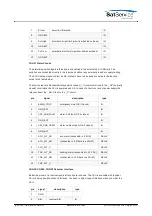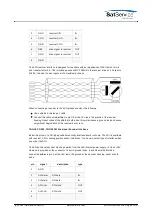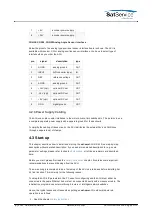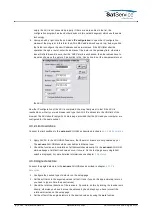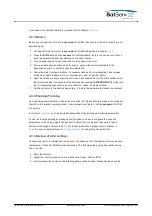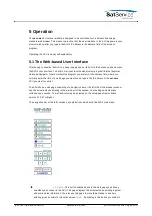
The electrical state of an input or output is indicated by the HI / LO label displayed with the signal.
HI means that current is flowing through the optocoupler for this input or output. LO means that
no current flows. As some signals are defined to be 'true' when a switch is opened, the electrical
level of the signal not necessarily describes the logical level of this signal, too.
Logical I/O Levels
The logical level of an input or output is described by it's color: Green means this signal is
inactive, OK or 'false'. Read means the signal is active or 'true'.
Toggling output levels manually
The 'Test' page also lets you toggle the actual state of each output signal simply by clicking to the
underlined HI/LO mark of the signal. If you do this, you should consider the following:
The ACU sets the motor driver outputs eight times a second for each axis having the motor
driver type set to 'DIR-START' or 'DUAL-START'. This immediately will overwrite any change
you make. If you want to test if the motor driver outputs command the motor driver as
expected, switch the motor driver type for this axis to 'NONE' at the
Setup
page before you
set the outputs manually.
The 'Test' page is re-read by the Web-browser about once a second. Some browsers seem
to ignore mouse clicks occasionally due to the screen refresh.
Adaptive tracking coefficients:
In adaptive tracking mode the ACU displays the coefficients of the actual model in two lines at the
bottom of the text page. The number of coefficients displayed depends on the size of the model:
SMALL: a0,a1,a2 (1) MEDIUM: a0,a1,a2,a3,a4 (2) LARGE: a0,a1,a2,a3,a4,a5 (3)
If the beacon signal drops below it's theshold, the antenna movement is calculated from these
coefficients using the formulas shown below:
Hardware Test Page Example:
(C) 2022, SatService GmbH
www.satnms.com
ACU-ODM-UM-2209 Page 33/73

